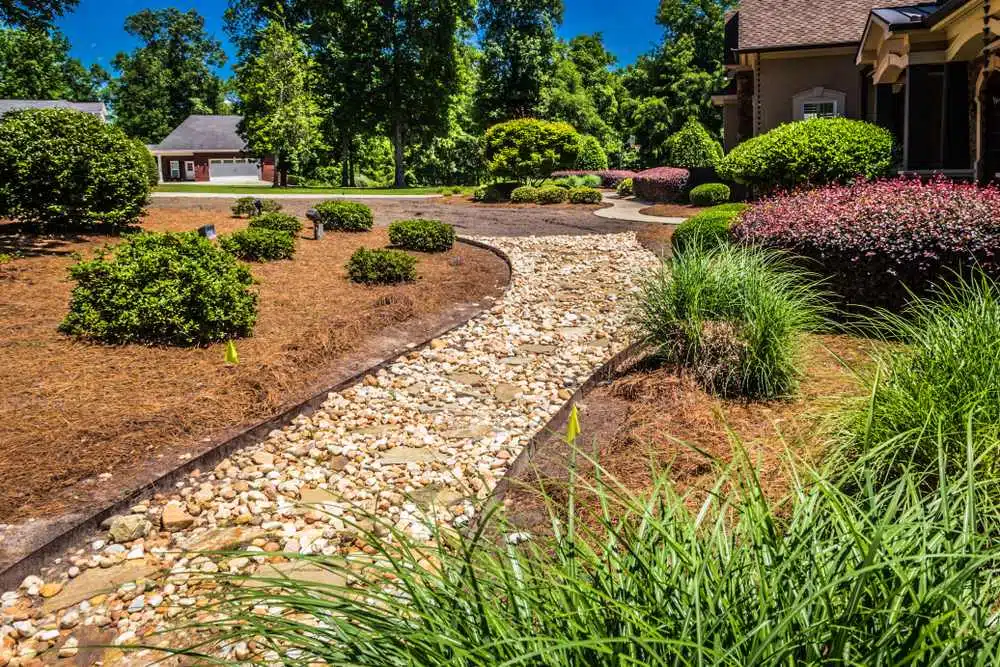The practice of combining organic compost with river rocks is revolutionizing garden aesthetics and sustainability. This unique blend enhances the innate beauty of outdoor spaces while also fostering a thriving ecosystem. Discover how integrating nutrient-rich compost with river rocks can elevate your landscaping endeavors to unparalleled heights.
Benefits of Blending Compost and Stone
The combination of compost and stone brings a myriad of benefits to any landscape.
- Enhances Soil Health: The addition of organic matter from compost enriches the soil, making it more fertile and conducive for plant growth. At the same time, river rocks improve soil drainage by preventing compaction, promoting root aeration, and reducing erosion.
- Sustainable Landscaping: By utilizing compost and stones, you are not only beautifying your garden but also adopting an eco-friendly approach. Compost is created from organic waste, diverting it from landfills and reducing greenhouse gas emissions. River rocks require little to no maintenance, making them a long-term solution for landscaping.
- Improves Water Retention: Compost has the ability to retain moisture, reducing the need for frequent watering. This is especially beneficial in arid regions where water conservation is crucial.
- Natural Weed Control: Weeds can be a nuisance in any garden, but by layering compost and river rocks, you can create a natural barrier that suppresses weed growth without the use of harmful chemicals.
- Adds Texture and Visual Interest: The contrast of dark, rich compost with the smooth, neutral tones of river rocks creates a visually appealing landscape that is both organic and modern. This unique combination adds depth and texture to your outdoor space.
How to Blend Compost and Stone
To achieve the perfect balance of compost and stone in your landscape, follow these steps:
- Prepare the area by removing any existing plants, debris, and weeds.
- Spread a layer of compost evenly over the desired area using a rake or shovel.
- Distribute river rocks on top of the compost, covering it completely with a layer that is about 2-3 inches thick.
- Use a rake or broom to gently mix the compost and rocks together, ensuring an even distribution.
- For a more polished look, consider adding additional layers of compost and river rocks until you reach your desired depth.
- Water the blended area thoroughly to help settle the rocks and activate the compost.
Tips for Maintaining a Compost and Stone Landscape
- Regularly check the moisture level of your soil to ensure it is not too wet or dry. Adjust watering accordingly.
- Add a layer of fresh compost on top of the blended area every 6-8 months to replenish nutrients in the soil.
- To prevent weeds from growing, periodically check and remove any straggling weeds that may have found their way through the layers.
- Consider using plants that are well-suited for a compost and stone landscape, such as succulents, cacti, or native plants.
- If you are blending compost with larger river rocks, create planting pockets within the layers to allow for easier placement of plants.
Aesthetic Appeal and Functionality
By combining river rocks and compost, we not only achieve practical benefits but also elevate the aesthetic charm of landscapes. This harmonious blend has the power to metamorphose mundane spaces into captivating natural havens.
- Crafting Zen Gardens
With meticulous placement of river rocks and the addition of compost-rich planting areas, you can craft tranquil Zen garden spaces that beckon serenity and introspection.
Sustainable Landscaping Practices
By integrating river rocks and organic compost into landscaping projects, you showcase a profound commitment to sustainability. This eco-conscious approach minimizes the need for chemical fertilizers and excessive watering, perfectly aligning with Salt Lake City’s green initiatives.
- Encouraging Local Biodiversity
Sustainable landscaping embraces the use of natural elements like river rocks and compost, creating an inviting haven for a diverse range of wildlife. From beneficial insects to birds, this approach enhances local biodiversity, promoting a thriving ecosystem.
In Salt Lake City, the intentional incorporation of river rocks and compost into landscapes offers a harmonious blend of aesthetic beauty, environmental health, and sustainability. By adopting these practices, homeowners and landscapers can elevate the visual appeal of outdoor spaces while nurturing the ecological well-being of the community. The result? Outdoor sanctuaries that coexist in perfect harmony with the natural landscape.

